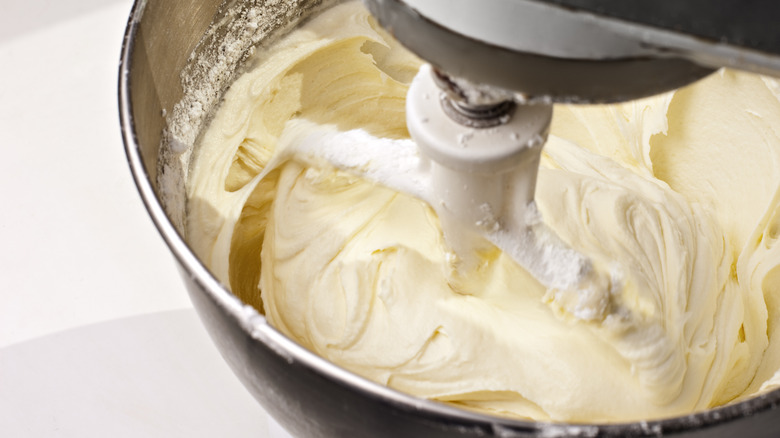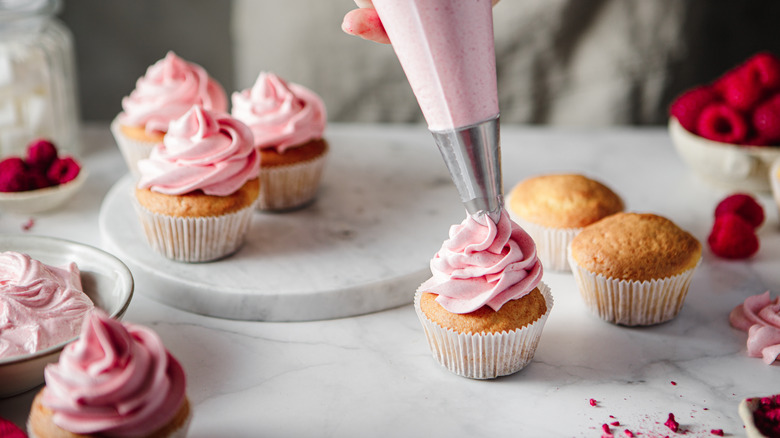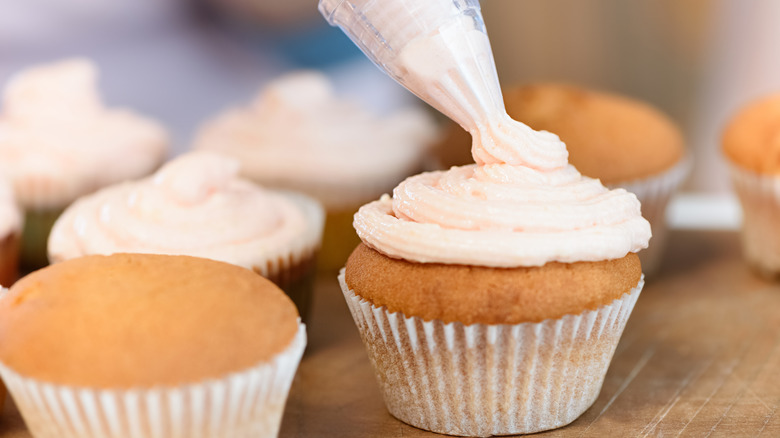Heat Your Mixing Bowl To Ensure A Silky Smooth Buttercream Frosting
Your moist and delicious miso chocolate cake is down and ready for the frosting, but you've suddenly hit a baking wall. Your buttercream is not as smooth and spreadable as you'd like it to be. Achieving that perfect creamy consistency can sometimes feel elusive while baking at home. But what if there was a simple trick, using a common household ingredient, to transform your buttercream? Good news: There is! All it takes is just a few drops of boiling water. Yes, you heard us right.
Buttercream, while delicious and versatile, can be notoriously tricky to get right. Too thick, and it can tear your freshly-baked cakes; too thin, and it can drip off the sides, and coverage will be uneven and even ugly. Almost every baker, amateur or professional, has faced buttercream-related challenges. Incorporating a few drops of boiling water makes all the difference in buttercream, ensuring it will be silky and easy to spread over your cakes.
Find the right balance
At first glance, adding boiling water to buttercream might seem counterintuitive. Won't you melt the beautiful cream and the butter in it? And doesn't butter separate when mixed with water? While the answer to those questions is yes, the key lies in an easy balancing act. When adding boiling water to buttercream, add a few drops to start and up to a teaspoon or two to loosen the buttercream, making it smoother and silkier, thus more pliable and easier to spread over your cake.
However, if you add too much hot water to your buttercream, it will separate, and you'll most likely end up with an oily mess. Buttercream's core ingredients, predominantly butter and sugar, are sensitive to temperature changes. Too cold, like in the refrigerator or freezer, the buttercream will harden, making it less workable and spreadable. On the other hand, if it's too warm, it might become overly runny, oily, gritty, and even curdle, compromising its structural integrity. Introducing hot water delicately adjusts the mixture's temperature, yielding a Goldilocks consistency that's neither too stiff nor too fluid — it's just right. So, next time you whip up a batch of buttercream, remember this nifty food hack. A few drops of boiling water can make all the difference in your buttercream.
Another hot water method for creamy buttercream frosting
Hot water is undeniably the answer to silky, smooth buttercream frosting. But there's another water-based approach that typically works equally well. There's no need to boil the water using this method, but it does need to be as hot as possible coming from the tap. In this scenario, you'll be running hot water directly over the bowl of frosting.
To ensure the ultimate smooth texture, it only takes about half a minute after preparing the buttercream frosting. Ideally, the frosting will be in a stainless steel bowl with a good bit of height, and preferably one with handles. Let the water in your kitchen sink run until it reaches its maximum level of heat, and then tip the bowl of frosting slightly from side to side while letting the hot water run over the bowl's exterior. Because of its density, the buttercream frosting should mostly remain in place while the hot water gently softens it. Be careful not to let any water splash into the cream –– a slow and tender approach does the trick. Now the frosting will likely glide right across your cakes with still enough thickness for decorative piling and swirling.
Next time you whip up a batch of buttercream, remember these nifty food hacks. A few drops of boiling or running water can make all the difference in your tasty showcase buttercream.


